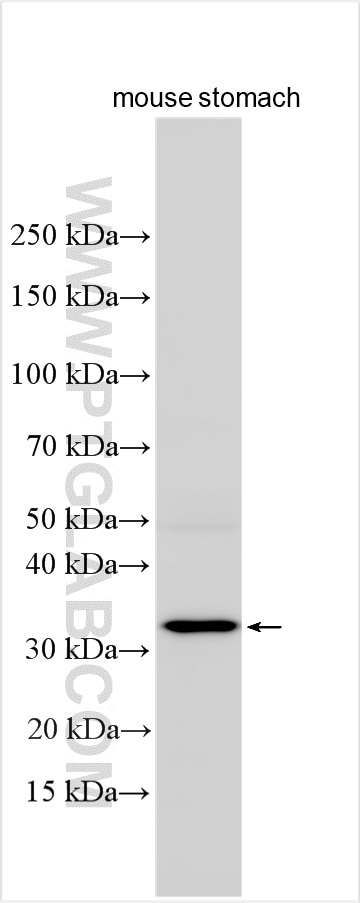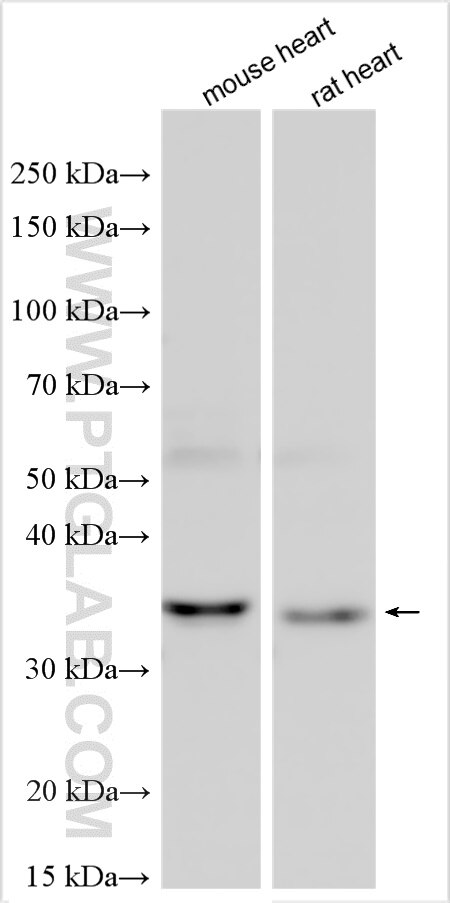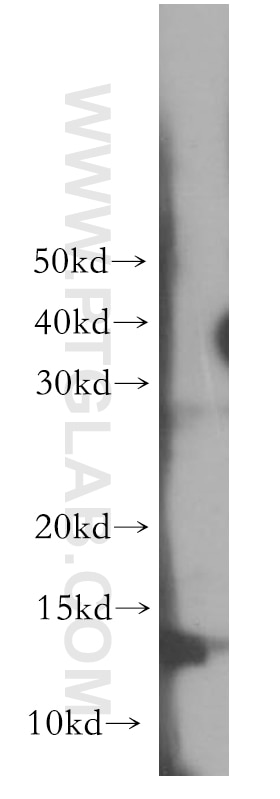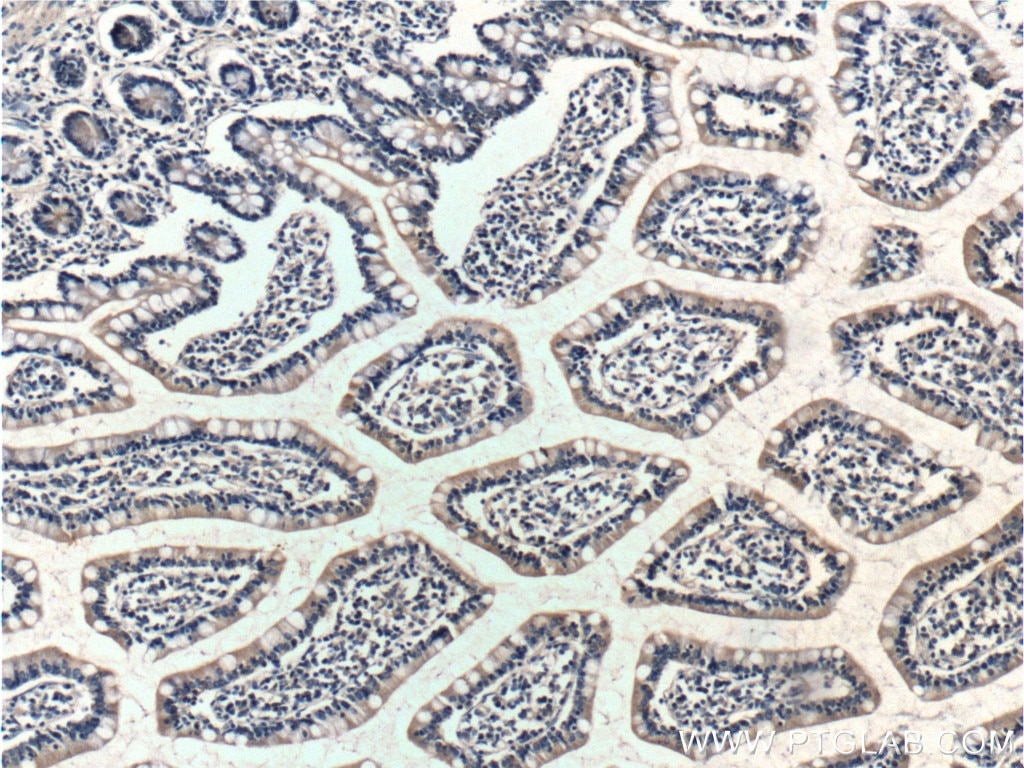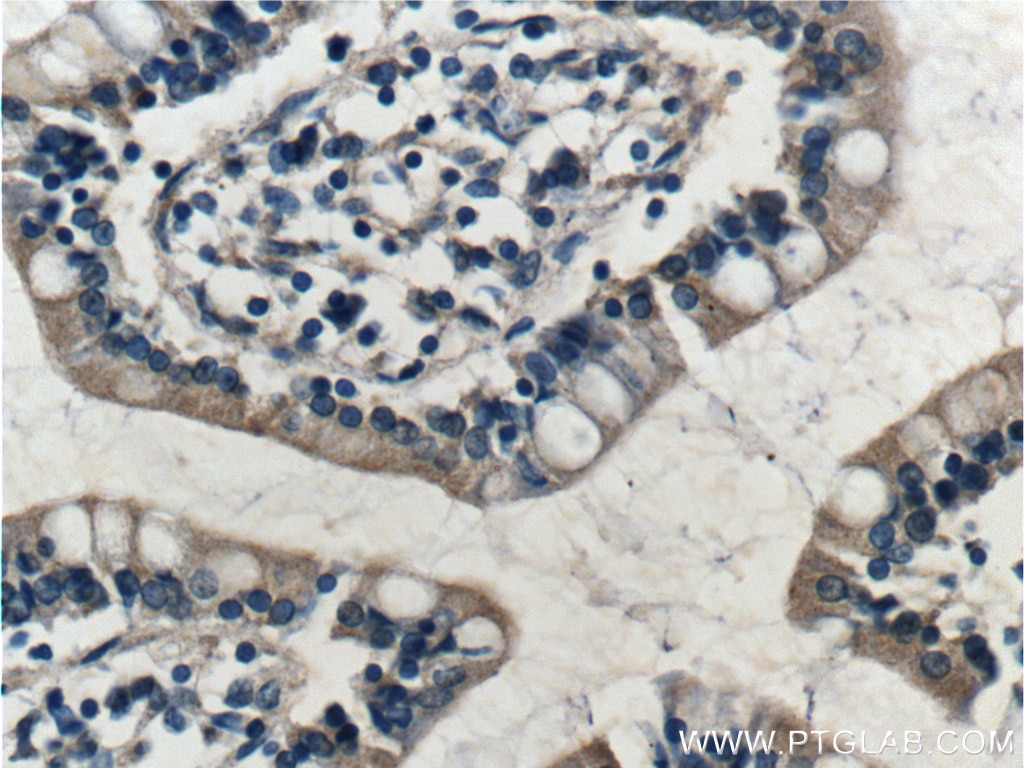RAMP1 Polyklonaler Antikörper
RAMP1 Polyklonal Antikörper für WB, IHC, ELISA
Wirt / Isotyp
Kaninchen / IgG
Getestete Reaktivität
human, Maus, Ratte
Anwendung
WB, IHC, IF, ELISA
Konjugation
Unkonjugiert
Kat-Nr. : 10327-1-AP
Synonyme
Geprüfte Anwendungen
| Erfolgreiche Detektion in WB | Mausherzgewebe, humanes Herzgewebe, Maus-Magengewebe, Rattenherzgewebe |
| Erfolgreiche Detektion in IHC | humanes Dünndarmgewebe Hinweis: Antigendemaskierung mit TE-Puffer pH 9,0 empfohlen. (*) Wahlweise kann die Antigendemaskierung auch mit Citratpuffer pH 6,0 erfolgen. |
Empfohlene Verdünnung
| Anwendung | Verdünnung |
|---|---|
| Western Blot (WB) | WB : 1:500-1:3000 |
| Immunhistochemie (IHC) | IHC : 1:50-1:500 |
| It is recommended that this reagent should be titrated in each testing system to obtain optimal results. | |
| Sample-dependent, check data in validation data gallery | |
Veröffentlichte Anwendungen
| WB | See 3 publications below |
| IHC | See 3 publications below |
| IF | See 4 publications below |
Produktinformation
10327-1-AP bindet in WB, IHC, IF, ELISA RAMP1 und zeigt Reaktivität mit human, Maus, Ratten
| Getestete Reaktivität | human, Maus, Ratte |
| In Publikationen genannte Reaktivität | human, Maus, Ratte |
| Wirt / Isotyp | Kaninchen / IgG |
| Klonalität | Polyklonal |
| Typ | Antikörper |
| Immunogen | RAMP1 fusion protein Ag0402 |
| Vollständiger Name | receptor (G protein-coupled) activity modifying protein 1 |
| Berechnetes Molekulargewicht | 17 kDa |
| Beobachtetes Molekulargewicht | 14 kDa, 33-35 kDa |
| GenBank-Zugangsnummer | BC000548 |
| Gene symbol | RAMP1 |
| Gene ID (NCBI) | 10267 |
| Konjugation | Unkonjugiert |
| Form | Liquid |
| Reinigungsmethode | Antigen-Affinitätsreinigung |
| Lagerungspuffer | PBS with 0.02% sodium azide and 50% glycerol |
| Lagerungsbedingungen | Bei -20°C lagern. Nach dem Versand ein Jahr lang stabil Aliquotieren ist bei -20oC Lagerung nicht notwendig. 20ul Größen enthalten 0,1% BSA. |
Hintergrundinformationen
RAMP1 (receptor-activity-modifying protein) is a member of the RAMP family of single-transmembrane-domain proteins which consist of an N-terminal extracellular domain, a transmembrane region, and a short intracellular C-terminal tail. RAMPs are required to transport calcitonin-receptor-like receptor (CRLR) to the plasma membrane. CRLR, a G protein-coupled receptor, can function as either a calcitonin gene-related peptide (CGRP) receptor or an adrenomedullin receptor, depending on which members of the RAMP family are expressed. RAMP1 transports the CRLR to the plasma membrane and then remains associated with it to function as a terminally glycosylated CGRP receptor, while RAMP2 and RAMP3 transfer the CRLR to the cell surface to generate receptors that are preferentially selective for adrenomedullin. RAMP1 can form a homodimer which migrates at 30-37 kDa on SDS-PAGE. (PMID: 9620797; 16188935; 12051717;PMID: 18384073)
Protokolle
| PRODUKTSPEZIFISCHE PROTOKOLLE | |
|---|---|
| WB protocol for RAMP1 antibody 10327-1-AP | Protokoll herunterladen |
| IHC protocol for RAMP1 antibody 10327-1-AP | Protokoll herunterladenl |
| STANDARD-PROTOKOLLE | |
|---|---|
| Klicken Sie hier, um unsere Standardprotokolle anzuzeigen |
Publikationen
| Species | Application | Title |
|---|---|---|
Int J Mol Sci The Role of TRPV1/CGRP Pathway Activated by Prevotella melaninogenica in Pathogenesis of Oral Lichen Planus | ||
J Virol CGRP inhibits SARS-CoV-2 infection of bronchial epithelial cells, and its pulmonary levels correlate with viral clearance in critical COVID-19 patients | ||
J Headache Pain Calcitonin gene-related peptide receptor antagonist BIBN4096BS regulates synaptic transmission in the vestibular nucleus and improves vestibular function via PKC/ERK/CREB pathway in an experimental chronic migraine rat model. | ||
Front Pharmacol Effect of Xiongmatang Extract on Behavioral and TRPV1-CGRP/CGRP-R Pathway in Rats With Migraine. | ||
Neurosci Lett Calcitonin gene-related peptide differentially regulates gene and protein expression in trigeminal glia cells: findings from array analysis. | ||
Clin Sci (Lond) CGRP alleviates lipopolysaccharide-induced ARDS inflammation via the HIF-1α signaling pathway |
